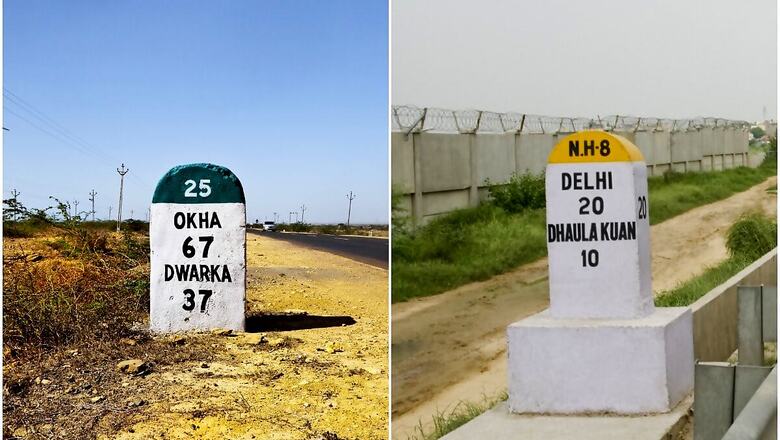
views
Sighting a milestone along the road is almost a daily phenomenon. Be it commuting to your workplace on a daily basis or going on a long trip with family, milestones are a common sight for commuters. But there is one thing which must have come to your mind at some point, why they come in different colours?
This is exactly what we will be decoding here. To begin with, milestones come as coloured stones fixed at the sides of roads or highways that help us with the distance of our destination or other important places mentioned on them. Our country comes with an extensive road network of 58.98 lakh kilometres and incorporates rural roads, national highways, state highways and expressways.
Here's what the different colours of milestones signify to travellers:
Milestones featuring orange strips
A milestone painted in orange colour depicts that you are travelling on a rural road. Constructed under ambitious initiatives like Pradhan Mantri Gram Sadak Yojna (PMGSY) and Jawahar Rozgar Yojna (JRY), rural roads span across a length of 3.93 lakh km.
Yellow strips
A yellow-coloured milestone depicts that you are travelling on a national highway. They integrate different cities and states and cover a length of 151,019 km as per statistics in the year 2021.
Milestones with black or blue strips
Milestones featuring black or blue and white strips reflect that you are travelling on a city or district road. There is a 561, 940 km long network of district roads in India at present.
Green milestone
Milestones with green colour are leveraged on state highways. They connect different cities of a state and span across 176,166 km in length as of data issued in 2016.
Zero mile centreThe city of Nagpur is served as zero mile centre in India during the British era. It was the spot utilized as a reference point to gauge distances to all other major cities.
Read all the Latest News, Breaking News and Coronavirus News here. Follow us on Facebook, Twitter and Telegram.



















Comments
0 comment